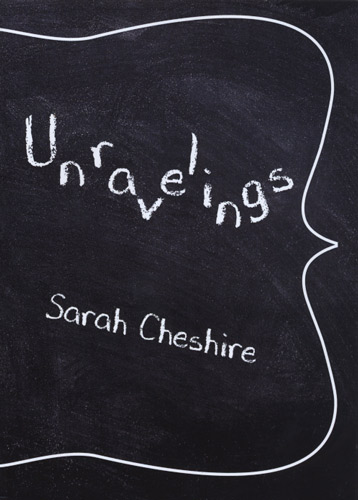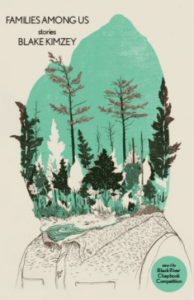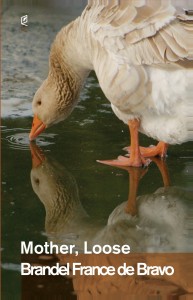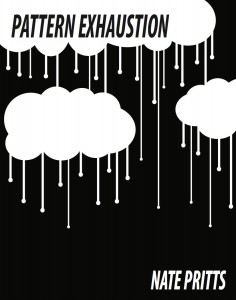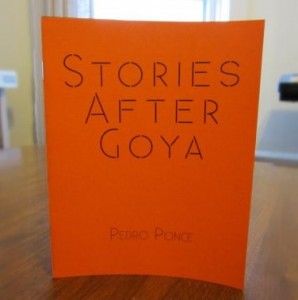
(BPJ, 2021)
REVIEW BY LISA LOW
—
Katie Farris’s A Net to Catch My Body in its Weaving (A Net) is a short, powerful book chronicling the emotional voyage and struggle to survive of a woman diagnosed with Stage 3 breast cancer at age thirty-seven. In twenty-six poems told over thirty-seven pages (the entire chapbook can be read in a half an hour), A Net narrates a sequence of events following the announcement of breast cancer: a revelatory phone call; an MRI; getting dressed on the morning of surgery; sitting in the waiting room after surgery; looking in the mirror and seeing a monster without hair or breasts; a desire for sex during chemo; spousal tenderness; a walk in the woods; a conversation with Robert Frost; and the finding, beyond the bodily strength and support of a loving husband, of spiritual strength in Emily Dickinson. Each of the poems illustrates one facet in the complex drama of Farris’ trauma: shock, pain, grief, loneliness, terror, alienation, self-loathing, and joy. Winner of The Beloit Poetry Journal’s 2021 Chad Walsh Chapbook Prize, A Net is as easy to read as a Dick and Jane book. Partly because breast cancer is a common scourge (one in eight women are diagnosed with the disease; eight in eight women fear it); partly because the book is so well written; partly because the book’s purpose is to write “love poems in a burning world,” I doubt many English-speaking humans would put the book down without first finishing it. Everything, every poem and every moment in every poem, tells the story of Farris’s cancer, making the chapbook a unified and suspenseful, hard to turn-away-from story of a person dancing as fast as she can on the head of a pin called death.
Twin American poet mentors preside over this book, Emily Dickinson and Walt Whitman. In a “Row of Rows” Farris and her husband argue about whether Whitman or Dickinson is the greater epic poet. Farris chooses Whitman in the argument, but Dickinson is clearly the mothering rib from which Farris more naturally springs (“you, the voice, I the faithful echo,” she writes in “Emiloma.”) In the book’s last explosive elated poem—“What Would Root”—Farris finds a home in Whitman. For the most part otherwise, Farris is all Dickinson. Like Dickinson, Farris is a tiny female (“have you seen me?” Farris writes, “so skinny you could shiv me with me”) whose poetry is also “tiny.” Indeed, Farris’s poems are even shorter and slighter than Dickinson’s. “A Week Before Surgery”—which describes Farris’s mental preparation for surgery (“like Giotto’s angels,” the poem begins, “sketched from his studies / of sheep, I open the jaws of my back to the sky”)—is six lines long. “Ice for Me” is seven lines long. “The Man You Are the Boy You Are” is nine lines long.
Dickinson’s importance to Farris is apparent not only in stylistic and cultural/biological similarities (brief, hyphenated poems written by a slight, white American female on either side of the twentieth century), but in Farris’s frequent references to Dickinson. Dickinson is the subject of five of the chapbook’s twenty-six poems and she carries three of the book’s titles. Dickinson is Farris’s poetic mentor; she is her spiritual mentor as well. In “Emiloma” the breast-afflicted Farris writes, “Today I placed / your collected poems / over my breast, my heart / knocking fast / on your front cover.” In “Finishing Emily Dickinson” Farris grieves the “loss”—the coming to the end—of Dickinson, for she has finished the Collected Poems (some maybe, like Plath’s, written hastily before her death): “Oh, Emily, goodbye! / We met in April and parted in July.” But Emily is not gone, for Dickinson’s body is the steeple on Farris’s “Church of Mystery—” and the bonging tongue of her steeple-bell rings “on, beyond.”
The most common character in the book besides Farris herself (whose traumatized subjectivity is explored throughout) and Emily Dickinson, is Farris’s husband (the real life poet Ilya Kaminsky) who figures in the following poems as caretaker and lover: “Why Write Love Poetry in a Burning World?,” “In the Event of My Death,” “The Man You Are the Boy You Are,” “Marriage, An Exercise,” “A Row of Rows,” “An Unexpected Turn of Events,” “If Marriage,” “I Wake to Find You,” and “Against Loss.” These love poems—mid-trauma marriage analyses—comprise a third of the book, or nine of the book’s twenty-seven poems. No sisters, brothers, mothers, or fathers wander these pages. Dickinson, Kaminsky, and Farris herself are the book’s primary characters. They alone are Farris’s guideposts; her rock-solid turn tos in a frightening world.
The poems are full of pain, but they are also funny, reveling in black humor. In “Standing in the Forest of Being Alive” Farris writes: “some of us are still putzes / in death, catching bird shit on our tombstones.” In “An Unexpected Turn of Events Midway through Chemotherapy,” Farris announces “I’d like some sex please.” In “After the Mastectomy” Farris writes, since it’s hard for a “watchtower” (a mastectomy survivor) to hide, “I go to the world with my tongue out / and my shirt unbuttoned, my keys / in the lock” wearing “a six inch scar instead of a nipple.” Funniest of all, Farris writes in “If Marriage”: “If Marriage is a series / of increasing / intimacies, a slow / sweet collapse into / oneness, I / would still beg / your forgiveness / for asking / your assistance / unwinding that pale hair / from my hemorrhoid.”
Besides being brief (a couple of poems are one sentence stretched into a skinny vertical line), the poems are characterized by occasional rhymes stacked on top of each other (attuned / soon; on / beyond; Lupron shot / in the gut; stone / palindrome) and by the knitting together of image patterns. The image of a braid as a ladder recurs. Farris’ braid, lost in chemo, is the rope she tells her husband to keep, for she will need that braid to let herself down into earth if she dies. The word “puppet” comes and goes. Pain enters Kaminsky’s face “like a hand hunting inside a puppet.” Similarly, the sky “always / has its hand in you / as if you were a puppet.” Another recurring image is of a door. In the book’s prefatory poem, “Why Write Poems in a Burning World,” Farris describes herself as stuck in a wedged-open door that is at once a barrier and a shield. The door signifies the moment of annunciation. In that moment when she learns she has breast cancer, Farris becomes trapped like a fly in amber between innocence and experience, looking by necessity into a terrifying future the end of which she cannot fully see.
A Net ends with a truly spectacular breakthrough love poem, “What Would Root.” In it Farris comes to terms with her death. “What Would Root” differs from the twenty-five poems which precede it, first, because of its length (it is five stanzas of eight unhampered lines; eight Whitmanian ego-bursts, each), and second, because of its unrestrained exuberance. The lines are longer; the emotions less bridled; and there is an acceptance of death-in-earth reminiscent of Walt Whitman who described grass as the “uncut hair of the dead” and who said “look for me under your boot soles.” As if it were an exhilarating dream, the poem describes Farris going into the woods, being among the animals, and becoming eventually a part of the woods. Twigs grow from her eyes, she lies down and feels the hairs on the back of her neck rise, and realizes for the first time they are not hairs but roots and that “everything [is] everything.” As she lies down, the roots in her skull shift “beneath her own branches” and the top of her head blows off, allowing the tentacles that come from her to root in earth and drink. In this poem Farris relaxes at last and the self affixes itself in a kind of permanence to planet Earth.
The poems hold occasional missed notes and ineffective lines, but mostly Farris captures the essence both of tenderness and terror with a few amazing deft strokes. She steps easily, poem-by-poem, from initial diagnosis; to CT scan; to pre-op prep; to surgery; to post-op doctor visit, to being stared at for breast-less-ness; to moments of comfort with the beloved; to staring at herself transformed in the mirror—hairless and without breasts; to relaxing finally in the book’s spectacular ending. Pinioned by diagnosis in a spot of time, she trains herself to live with this terrifying new reality that cannot be avoided; that must be borne and somehow survived.
To the initiating question—“Why Write Love Poems in a Burning World?”—Farris offers several answers. First, the poems express love, both for her husband and the burning world itself. (In “Against Loss,” Farris says she writes the poems to give Kaminsky memories of her and to memorialize their relationship to one another in the event of her death.) Second, the poems form an emotional “net” or hammock to hold her body as it falls. Third, they teach her how to survive, offering her a vision of “what is not hell in hell”; reminding her that the world is beautiful, whatever her condition, and that she is beautiful, despite what chemotherapy has done to her body. Finally, they leave a legacy. They mark Farris’ presence in this world and provide a boat to ferry her from it. Not unlike Emily Dickinson’s stacks of poems tied in neat ribbons left for those who came after her, these poems are Farris’s legacy, written and organized not at age fifty-five, but at age thirty-seven because that’s when the threat of death came to Farris’s body.
While modern poetry is often derided as unreadable, readability is one of A Net’s most wonderful features. The poems are metaphorically subtle and emotionally ambitious but they speak plainly. Ted Kooser writes that poetry’s highest calling is to move the reader, to change the readers’s experience of the world. A Net meets that high bar well. (My first reaction on reading the book was to tell my friends who have had breast cancer to read it, immediately!) I defy a reader to not instantly understand and be moved by the book. Ted Kooser also writes that the purpose of poems is to be read, to form bridges; soul-altering connections between poet and reader. Again, Farris’s book fits this bill well. Farris’s very purpose is to connect, probably first and foremost with her husband, knowing that her life and legacy depend upon connection, but also with the common reader. In a world where Farris is doomed to walk alone, even without the hand of her husband, she walks less alone in the presumed understanding of the reader to whom she can tell her deepest secrets and speak her most unspeakable pain.
The inscrutability of modern poetry is notorious, blocking even the most enterprising reader from entry, like a dog at the gates of hell. But Katie Farris’s A Net to Catch My Body In Its Weaving is not inscrutable. Step-by-incisive step, A Net chronicles the stages in a plot of terror until we feel first-hand what it is like to face the loss of everything one lives for: life, love, marriage, and happiness. In A Net we learn what it is like to live beneath the waving scimitar of death and to be forced into hand-to-hand combat with it. Farris comes away from her cancer diagnosis awash in a brutality, different and knowing. We come away different and knowing, too; rewarded by her strength; sunk in that terrifying claw as if it were our own.
—
Lisa Elaine Low’s poetry has appeared in Valparaiso Poetry Review, Green Hills Literary Lantern, American Journal of Poetry, Evening Street Review, Free State Review, Good Works Review, Phoebe, The Potomac Review, Delmarva Review, Broken Plate, and Tusculum among other literary journals. She is co-editor with Anthony Harding of Milton, the Metaphysicals, and Romanticism (Cambridge University Press in 1994). She received her doctorate in English from the University of Massachusetts and spent twenty years as an English professor, teaching at Cornell College; Colby College; and Pace University. Visit her at lisalowwrites.com.
![[PANK]](https://pankmagazine.com/wp-content/themes/pank/assets/images/pank-logo-large.png)

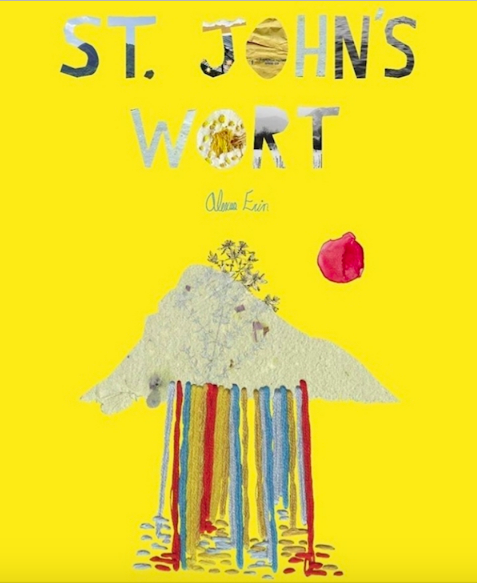 (Animal Heart Press, 2019)
(Animal Heart Press, 2019)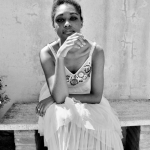 ALEXUS ERIN is an American poet, performer, and Ph.D. candidate living in the UK. Her poetry has previously appeared in Potluck Magazine, The Melanin Collective, The Nervous Breakdown, The Audacity, American Society of Young Poets, God Is in the TV, LEVELER, Red Flag Poetry, Silk + Smoke and a host of others. She is the author of Two Birds, All Moon (Gap Riot Press) and Cartoon Logic, Cartoon Violence (Cervena Barva Press). She was the 2018 Poet Fellow of the Leopardi Writers Conference and a performer at Edinburgh Fringe Festival (2018). Her screenplay, American Lotus Project, won the screenwriting award at Temple University’s Diamond Film Festival (2015). When Alexus isn’t writing, dancing, singing, comedy-ing or researching maternal/child health, find her growing plants in your walls as the co-founder of Wallflower Hydroponics, and trying to catch up on sleep.
ALEXUS ERIN is an American poet, performer, and Ph.D. candidate living in the UK. Her poetry has previously appeared in Potluck Magazine, The Melanin Collective, The Nervous Breakdown, The Audacity, American Society of Young Poets, God Is in the TV, LEVELER, Red Flag Poetry, Silk + Smoke and a host of others. She is the author of Two Birds, All Moon (Gap Riot Press) and Cartoon Logic, Cartoon Violence (Cervena Barva Press). She was the 2018 Poet Fellow of the Leopardi Writers Conference and a performer at Edinburgh Fringe Festival (2018). Her screenplay, American Lotus Project, won the screenwriting award at Temple University’s Diamond Film Festival (2015). When Alexus isn’t writing, dancing, singing, comedy-ing or researching maternal/child health, find her growing plants in your walls as the co-founder of Wallflower Hydroponics, and trying to catch up on sleep.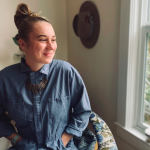 KATE HOYLE was raised in Moraga, California. Her work has been published in Scoundrel Time, The Tupelo Press 30/30 Project, and Typishly. She is an MFA candidate in Poetry at the Warren Wilson Program for Writers.
KATE HOYLE was raised in Moraga, California. Her work has been published in Scoundrel Time, The Tupelo Press 30/30 Project, and Typishly. She is an MFA candidate in Poetry at the Warren Wilson Program for Writers.